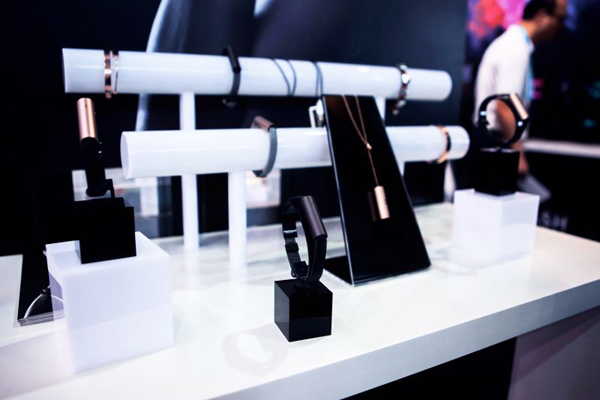 |
|
Misfit's newly-launched fitness and sleep monitor-ray are displayed on May 13, 2016 at CES Asia in Shanghai. [Photo provided to chinadaily.com.cn] |
In an interview with China Daily, Liu Kai, vice-president of Misfit Global, said, "Smart wearables became a hot-discussed topic in recent two years as our previous devices were not smart. As more early adapters become loyal customers in the sector, a market like China that reserves a large amount of young buyers will allow smart devices to become one of their daily necessities."
The company had a booth at the ongoing 2016 Consumer Electronics Show Asia (CES Asia) held in Shanghai, showcasing its latest wrist fitness and sleep monitor product Ray.
"The market segmentation is becoming more and more important as the market becomes more mature," said Liu.
Recognized as a stylish fitness tracker in the industry, Misfit Inc aims to deliver smart fitness device to consumers who are willing to add gadgets to their collection of wrist accessories that they wear every day.
"Everybody want to be individual and by having a range of fashion brands, customers can make their personal statement for how they look and feel," said Annemiek Ballesty, vice-president of Fossil Group Inc China.
The US watch maker announced the acquisition of Misfits for $260 million last November.
Similar to the strategy implemented by Apple Watch, Misfit provides a series of accessories for different environments such as working in the office, participating at a party, or practicing in a gym.
"By adding accessories, our users are able to use Misfit as their bracelet, necklace, or step trackers," said Liu.
"During the development of the wearables industry, we saw a fruitful of categories in products, not only the sports bands, but also smart watches, VR or AR headsets or smart shoes. However, due to the limitations of technology, some features and functions required improvements.
"Solving problems and making life easier are in the heart of wearables R&D. Just one or two clicks on a device, which will directly access a taxi-hailing app and enable users to order a taxi, would be the aim of development in the next generation wearable devices."
Misfit was founded in 2011 by Sonny Vu with John Sculley, the former CEO of Apple and Pepsi, and Sridhar Iyengar, co-founder and former CTO of AgaMatrix.
In December, 2014, Misfit raised $40 million in financing from Chinese smartphone maker Xiaomi Corp, e-commerce giant JD.com Inc, and venture-capital firms GGV Capital and Shunwei. The investment comes just a few months before Apple Watch is expected to hit the Chinese market.
According to the latest statistics released by consulting company International Data Corporation (IDC) in March, the worldwide shipments of wearable devices are expected to reach 110 million by the end of 2016, up 38.2 percent year-on-year. Among the figures, watch and wristband shipments will reach a combined total of 100 million shipments, up from 72.2 million in 2015.
The company's "Worldwide Quarterly Wearable Device Tracker" also shows that an expanding lineup of vendors combined with fast-growing consumer awareness and demand will generate double-digit growth throughout the 2015-2020 forecast period, culminating in shipments of 237.1 million wearable devices in 2020.
"Although smartwatches like the Apple Watch or Android Wear devices capture the spotlight, they will only account for a quarter of all wearables in 2016 and will grow to about a third by 2020," said Jitesh Ubrani, senior research analyst for IDC Mobile Device Trackers.
"It's time to start thinking about smarter watches -- traditional watches with some sort of fitness or sleep tracking but are unable to run apps—built by classic watch makers. These devices have the potential of making the technology invisible while still integrating themselves within day-to-day activities."
A latest report unveiled by market research institute GfK China said that in 2015, as a variety of low-cost homogeneous wearable devices hit the market and educate the users, consumers, especially younger generation buyers, will have more demands on high quality and well-designed products.
"More segment market in the market will be developed, including devices work for elder people, ladies and kids, and equipped with specific functions for mobile payments, health and fitness and professional usages," said GfK China.
According to GfK China, in terms of China's smart bands and bracelet market, Xiaomi's Mi Band has still ranked the top position in regard to shipment volumes due to its competitive price. In 2016, more upgraded improvements and categories will appear in the health and fitness function of smart bands and a trend has shown that smarter band makers will shift to produce smart watches.
